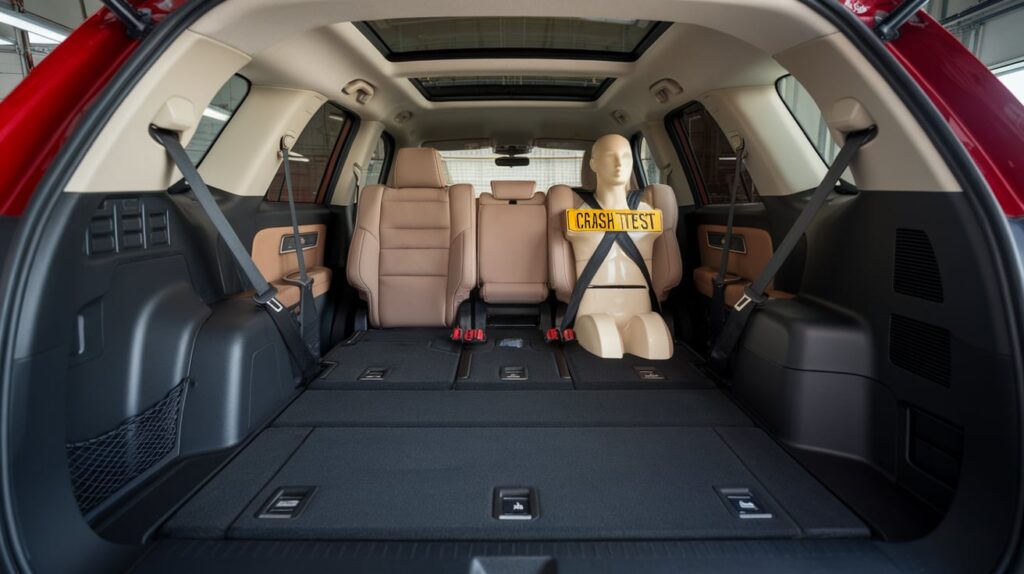Imagine this: You’re driving on a busy road, your children chatting in the back seats, when traffic suddenly stops.
Your pulse quickens, but your Honda responds swiftly, keeping your family secure. For many parents, this situation feels familiar.
That’s why Honda’s vehicles with 3rd-row seating are gaining attention in the family car market.
They provide room for your growing family and a range of safety features that exceed expectations.
In this guide, we’ll examine Honda’s safety innovations and show how they’re setting new standards for protecting all passengers, particularly those in the rear seats.
You’ll learn about the engineering achievements, real-life performance, and family-friendly features that make Honda stand out.
Join us as we explore the world of Honda’s 3rd-row safety!
Overview of Honda’s 3rd-Row Seating Vehicles
Honda offers two standout options for family-friendly vehicles with extra space: the Pilot SUV and the Odyssey minivan.
Both models are designed with families in mind, providing ample room and a strong focus on safety.
1. Honda Models with 3rd-Row Seating
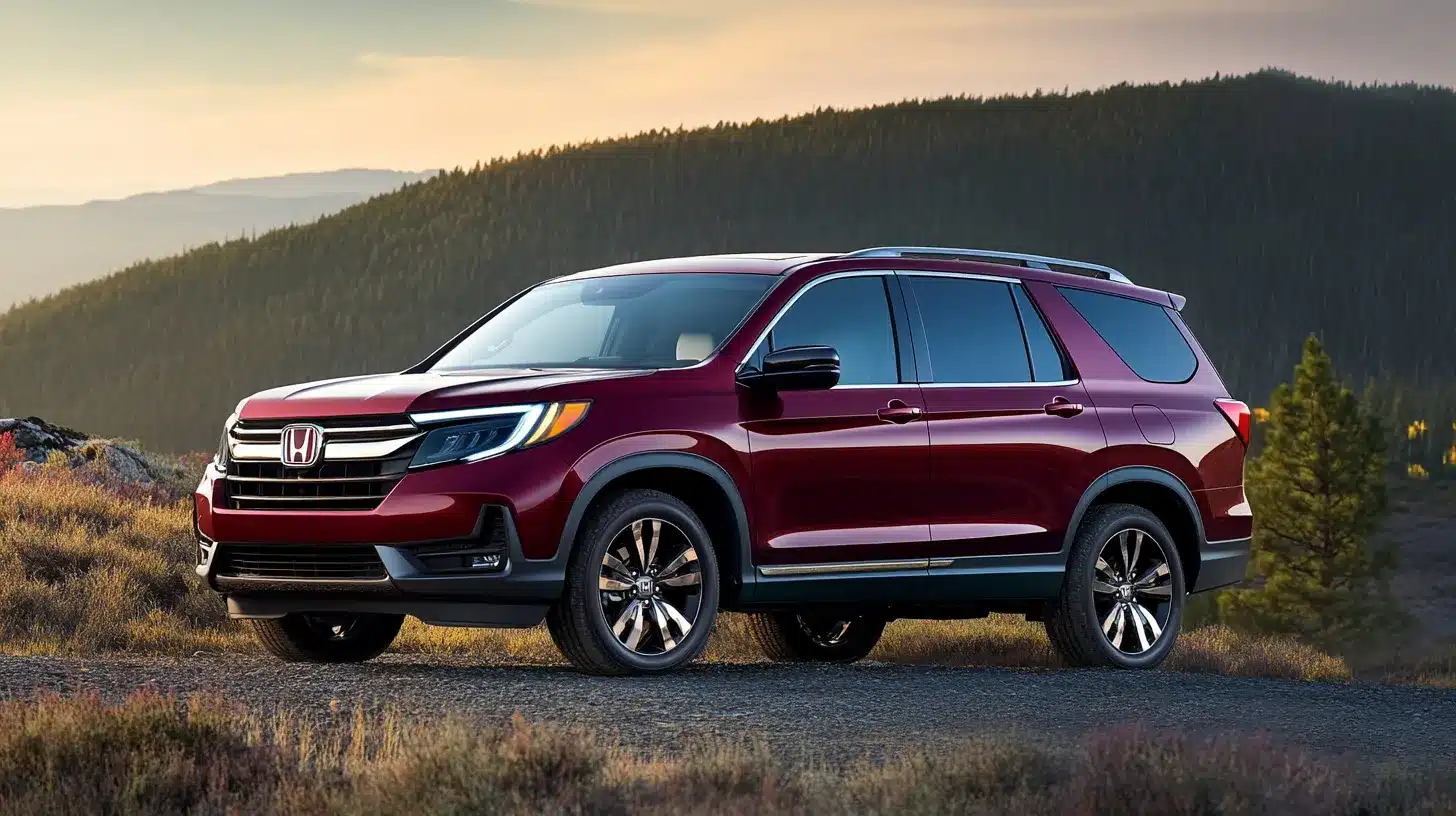
The 2023 Honda Pilot is a versatile SUV that caters to families who need space and capability. Here’s what makes it special:
- Seating for 7 or 8 passengers
- A robust 3.5L V6 engine with 285 horsepower
- Available All-Wheel Drive for added confidence in various driving conditions
- Spacious interior that easily accommodates both passengers and cargo
The 2023 Honda Odyssey is an excellent choice for those who prefer a minivan. This family-focused vehicle offers:
- Seating for eight passengers
- A powerful 3.5L V6 engine delivering 280 horsepower
- Innovative Magic Slide second-row seats for easy access to the third-row
- A design that puts family comfort and convenience first
2. Importance of 3rd-Row Seating Safety
Safety is paramount when it comes to vehicles with third-row seating, especially for larger families.
Honda understands this and has made it a priority in their design and engineering process.
For families with multiple children or those who often transport extra passengers, the safety of the third row is just as important as the front seats.
Honda’s approach to safety in these vehicles is thorough and thoughtful.
Some key safety features in Honda’s 3rd-row vehicles include:
- Advanced airbag systems protecting all three rows
- LATCH system for secure car seat installation
- Innovative design elements that enhance overall vehicle safety
Honda’s commitment to keeping families safe is evident in features like CabinWatch, which allows drivers to monitor rear passengers without turning around.
The Advanced Compatibility Engineering™ (ACE™) body structure is another example of Honda’s dedication to safety. It helps distribute crash energy more evenly in a collision.
By prioritizing safety in their 3rd-row seating vehicles, Honda aims to provide families with peace of mind on every journey, whether it’s a quick trip to the store or a cross-country adventure.
Core Safety Features in Honda’s 3rd-Row Seating Vehicles
Honda’s dedication to family safety is evident in their 3rd-row seating vehicles.
These models incorporate many safety features designed to protect all occupants, with special consideration for those seated in the rear.
Let’s explore the key safety elements that set these vehicles apart in the crowded family car market.
Passive Safety Features
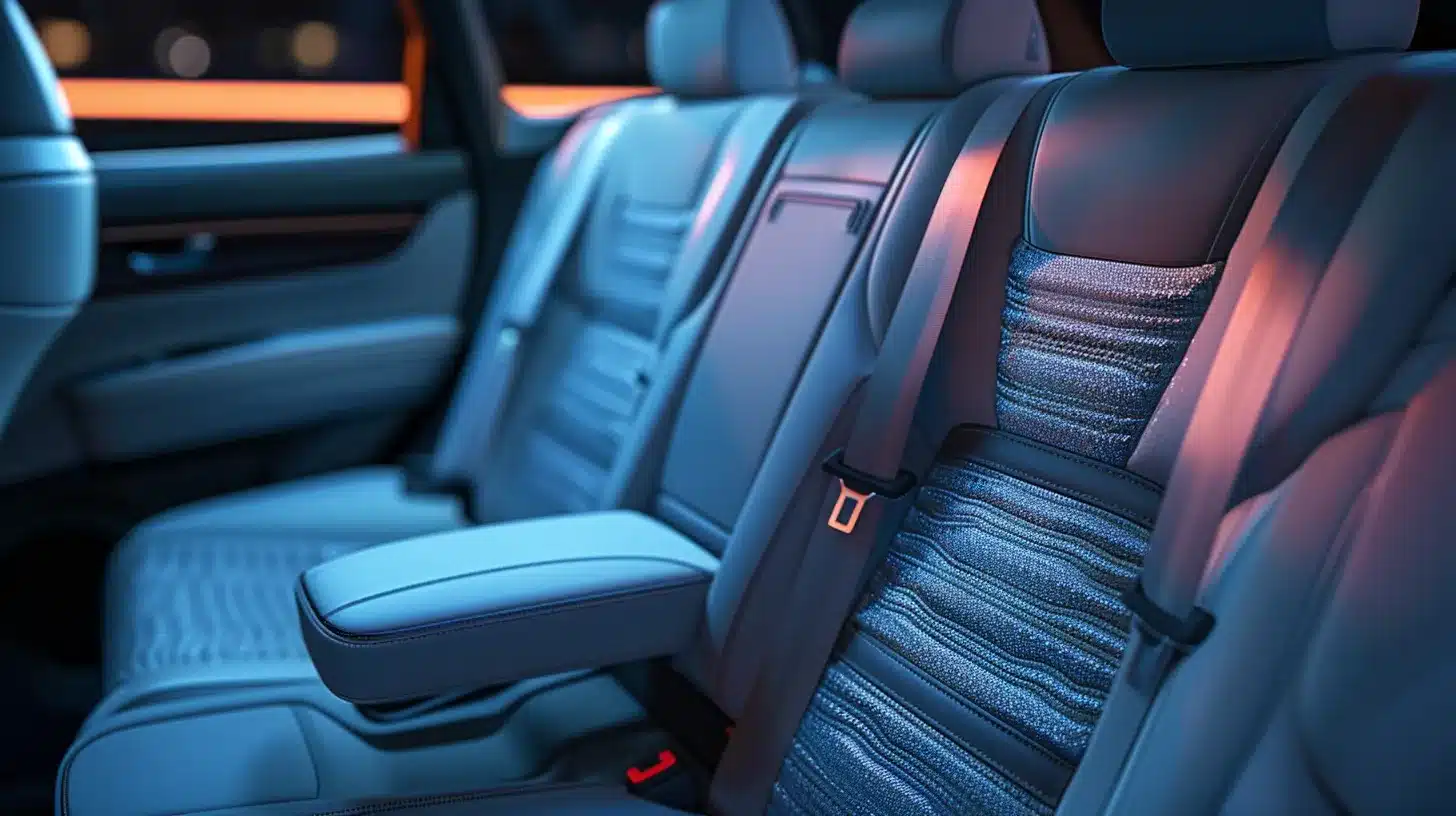
Passive safety features in Honda vehicles are the silent guardians of your family’s well-being.
These built-in safeguards are always on duty, ready to spring into action in a collision.
Honda’s approach to passive safety is comprehensive, addressing multiple aspects of passenger protection.
1. Body Structure
Honda’s innovative body design is the foundation of their safety philosophy.
The Advanced Compatibility Engineering (ACE) body structure is a marvel of modern automotive engineering.
This design creates a protective shield that envelops all occupants, from the front seats to the 3rd row.
In the event of a collision, the ACE body structure works to distribute crash energy evenly throughout the vehicle’s frame.
This energy distribution is crucial for minimizing the force that reaches the passenger compartment.
For 3rd-row passengers, this means a significantly reduced risk of injury, especially in frontal collisions where the impact forces can be most severe.
Key aspects of this design include:
- Strategic reinforcements creating a safety cage around all rows
- Energy-absorbing structures that help minimize impact forces
- High-strength materials used in critical areas of the vehicle
The use of high-strength steel and other advanced materials in critical areas further enhances the vehicle’s ability to withstand impacts.
This attention to detail in the body structure provides a solid foundation for all other safety features.
2. Airbag Systems
Honda’s comprehensive airbag system is a testament to their commitment to passenger safety.
This multi-layered protection system is designed to work in harmony, creating a protective bubble around all occupants, including those in the 3rd row.
The airbag system in Honda’s 3rd-row vehicles is both sophisticated and adaptive.
It uses sensors throughout the vehicle to determine the severity of a crash and adjust the deployment of airbags accordingly.
This smart system ensures that the right amount of protection is provided in various collision scenarios, minimizing the risk of airbag-related injuries while maximizing protection.
The system includes:
- Front airbags that adjust deployment force based on crash severity
- Side airbags to protect the torso and pelvis in side impacts
- Side curtain airbags extending to the 3rd row for head protection
The inclusion of side curtain airbags that extend to the 3rd row is particularly noteworthy.
This feature provides crucial head protection for all passengers, including those seated in the rear, in the event of a side collision or rollover.
It’s a clear indication of Honda’s holistic approach to safety, ensuring that all passengers receive the highest level of protection, regardless of where they’re seated in the vehicle.
3. Seat Belt Technologies
Seat belts are the most fundamental safety feature in any vehicle, and Honda has taken this essential element to the next level.
The advanced seat belt features in Honda’s 3rd-row vehicles go far beyond basic restraints, incorporating cutting-edge technologies to provide optimal protection in various crash scenarios.
Honda’s engineers understand that different types of collisions require different responses from safety systems.
That’s why they’ve developed seat belts that can adapt to the specific circumstances of a crash.
These smart restraints work in conjunction with the vehicle’s other safety systems to provide tailored protection for each occupant.
Key features include:
- Pretensioners that tighten belts instantly during a crash
- Load limiters that allow slight give to reduce chest injuries in severe impacts
- Three-point seat belts for all 3rd-row positions
- Seat belt reminders for all seats to encourage safe practices
The inclusion of three-point seat belts for all 3rd-row positions is particularly important.
This ensures that even passengers in the rear-most seats receive the same level of restraint as those in the front, a feature that’s not universal among vehicles with 3rd-row seating.
The seat belt reminders for all positions also play a crucial role in safety, encouraging proper seat belt use for every journey, no matter how short.
Active Safety Features
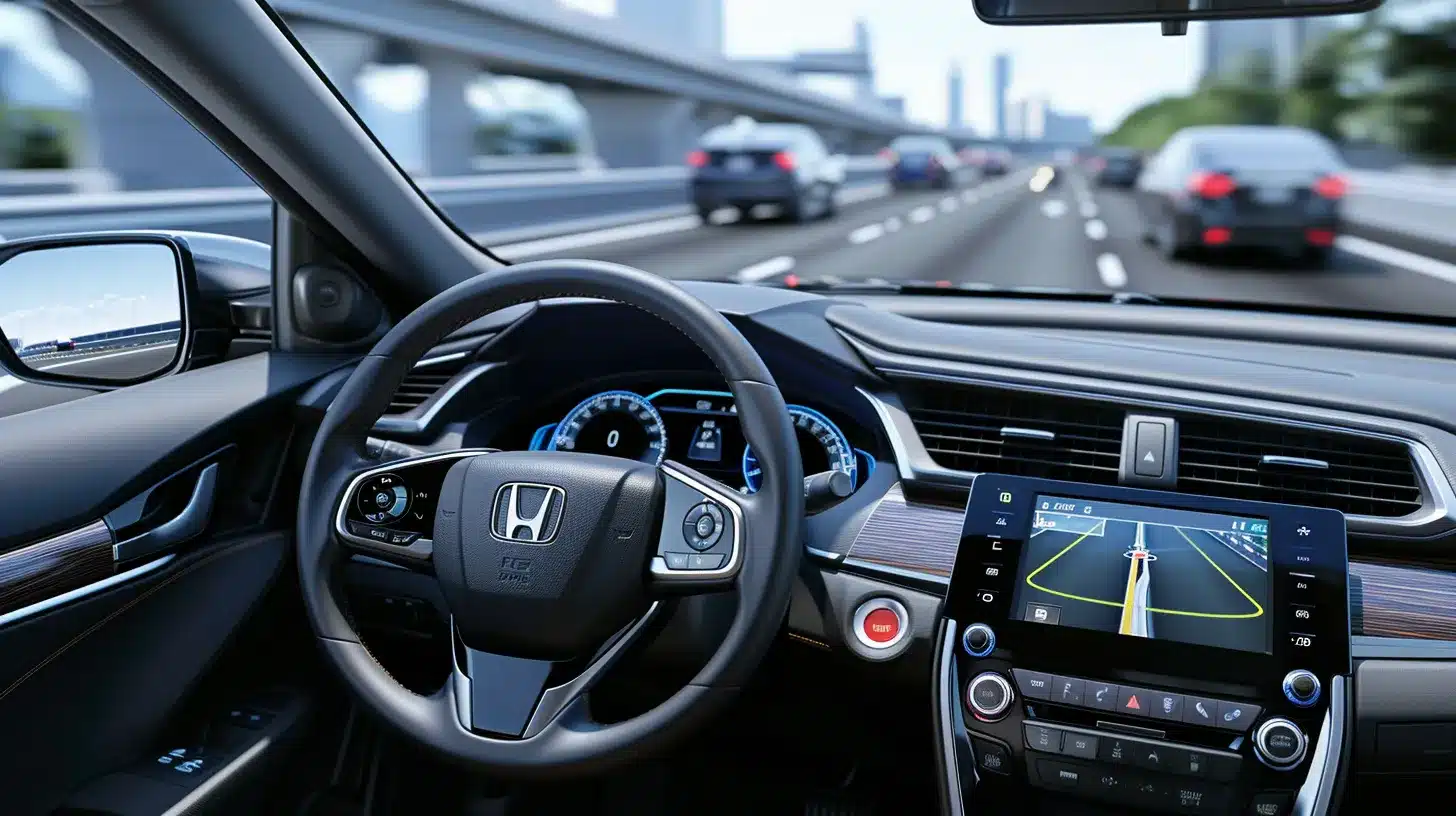
While passive safety features protect occupants during a crash, Honda’s active safety features work tirelessly to prevent accidents from occurring in the first place.
These systems use advanced technologies to monitor the vehicle’s environment, alert the driver to potential dangers, and even take action to avoid collisions when necessary.
1. Collision Prevention System
Honda’s Collision Prevention System is like having an extra set of eyes on the road at all times.
This advanced system uses a combination of radar and camera technology to scan the road ahead, identifying potential hazards before they become immediate threats.
What sets this system apart is its ability to differentiate between various types of obstacles.
It can identify vehicles, pedestrians, and other objects, allowing it to provide the most appropriate response for each situation.
This level of sophistication helps to reduce false alarms while ensuring that real threats are addressed promptly.
Benefits include:
- Early warning of potential collisions
- Automatic brake application in emergency situations
- Reduced severity of unavoidable impacts
The system’s ability to automatically apply the brakes in emergency situations is a game-changer for family safety.
In situations where every millisecond counts, this feature can significantly reduce the severity of a collision or potentially avoid it altogether.
For families with children in the 3rd row, this added layer of protection provides invaluable peace of mind.
2. Road Departure Prevention
Honda’s Road Departure Prevention system is a crucial feature for maintaining vehicle stability, which is especially important for vehicles with 3rd-row seating.
This system acts as a vigilant guardian, constantly monitoring the vehicle’s position relative to lane markings and road edges.
What makes this system particularly effective is its proactive approach. Instead of simply warning the driver, it takes active steps to keep the vehicle on the intended path.
This can be especially beneficial on long family trips where driver fatigue might be a factor, or in situations where sudden maneuvers might be necessary to avoid obstacles.
The system provides:
- Steering assistance to guide the vehicle back into the lane
- Selective brake application to individual wheels when necessary
- Significant reduction in the risk of rollovers
For families with children in the 3rd row, the system’s ability to prevent rollovers is particularly valuable.
Rollovers can be especially dangerous for rear-seated passengers, and by helping to keep the vehicle stable, this system adds an extra layer of protection for your most precious cargo.
3. Lane Keeping Technology
Honda’s Lane Keeping Assist System (LKAS) acts as a gentle co-pilot, helping to maintain the vehicle’s position on the road.
This feature is especially beneficial on longer trips, reducing driver fatigue and maintaining safe lane position.
The system’s ability to provide subtle steering inputs is a testament to Honda’s commitment to creating a seamless driving experience.
Unlike some lane-keeping systems that can feel intrusive, Honda’s LKAS works quietly in the background, only becoming noticeable when it’s truly needed.
Key aspects include:
- Camera detection of lane markings
- Subtle steering inputs to keep the vehicle centered
- Driver alerts if consistent steering input is not detected
For families traveling with children in the 3rd row, this system can help ensure a smoother, more stable ride.
By maintaining proper lane position, it reduces the likelihood of sudden movements that might disturb sleeping passengers or cause motion sickness in younger travelers.
4. Smart Cruise Control
Honda’s Adaptive Cruise Control (ACC) takes the stress out of long family road trips by automatically adjusting the vehicle’s speed to maintain a safe distance from the car ahead.
This advanced system is particularly useful in varying traffic conditions, from open highways to congested city streets.
What sets Honda’s ACC apart is its smooth operation.
The system accelerates and decelerates the vehicle in a way that mimics natural driving patterns, ensuring a comfortable ride for all passengers, including those in the 3rd row.
This can be especially beneficial for families with young children who might be sensitive to abrupt speed changes.
Features include:
- Automatic speed adjustments in traffic
- Smooth acceleration and deceleration for a comfortable ride
- Reduced driver stress in congested areas
The system’s ability to work in stop-and-go traffic is particularly valuable for urban families.
It can significantly reduce driver fatigue during rush hour commutes or on busy vacation routes, allowing parents to arrive at their destination feeling more refreshed and ready to enjoy family time.
5. Blind Spot Information System
The Blind Spot Information System is particularly useful for larger vehicles with 3rd-row seating, where visibility can sometimes be challenging.
This system acts as an extra set of eyes, constantly monitoring the areas that are typically hard to see in side mirrors.
What makes this system especially valuable is its proactive approach.
Instead of relying solely on the driver to check blind spots, it provides active alerts when a vehicle enters these hard-to-see areas.
This can be particularly helpful when changing lanes on busy highways or navigating complex urban traffic patterns.
It offers:
- Alerts when vehicles are detected in blind spot areas
- Visual and audible warnings to the driver
- Enhanced safety for all passengers, especially those in the rear
This system adds an extra layer of protection for families with children in the 3rd row during lane changes.
Reducing the risk of side collisions helps ensure that even the most vulnerable passengers are kept safe during every journey.
6. Cross Traffic Monitor
When backing up, particularly in busy parking lots or out of driveways, visibility can be severely limited.
Honda’s Cross Traffic Monitor becomes an invaluable asset in these situations, acting as an extra set of eyes to detect approaching vehicles from the sides.
This system is particularly beneficial for larger vehicles with 3rd-row seating, where rear visibility might be more challenging.
It uses radar sensors to detect approaching vehicles that might be out of the driver’s line of sight, providing both visual and audible alerts to help prevent collisions.
Benefits include:
- Detection of vehicles approaching from the sides when reversing
- Alerts to help prevent collisions in low-visibility situations
- Added protection for children or pets who might be in the surrounding area
For families, this feature offers peace of mind in everyday situations.
Whether you’re backing out of a busy school parking lot or navigating a crowded shopping center, the Cross Traffic Monitor helps ensure that your precious cargo—and those around you—stays safe.
By integrating these advanced active and passive safety features in their third-row vehicles, Honda has created a comprehensive safety ecosystem.
This holistic approach to safety means that every aspect of your family’s well-being has been considered and protected from the moment you start your journey to the time you reach your destination.
Specific Safety Standards for 3rd-Row Passengers
Honda’s commitment to safety extends to every vehicle seat, with particular attention given to the 3rd row.
This focus ensures that even the most vulnerable passengers are well-protected during every journey.
Child Safety in the 3rd Row
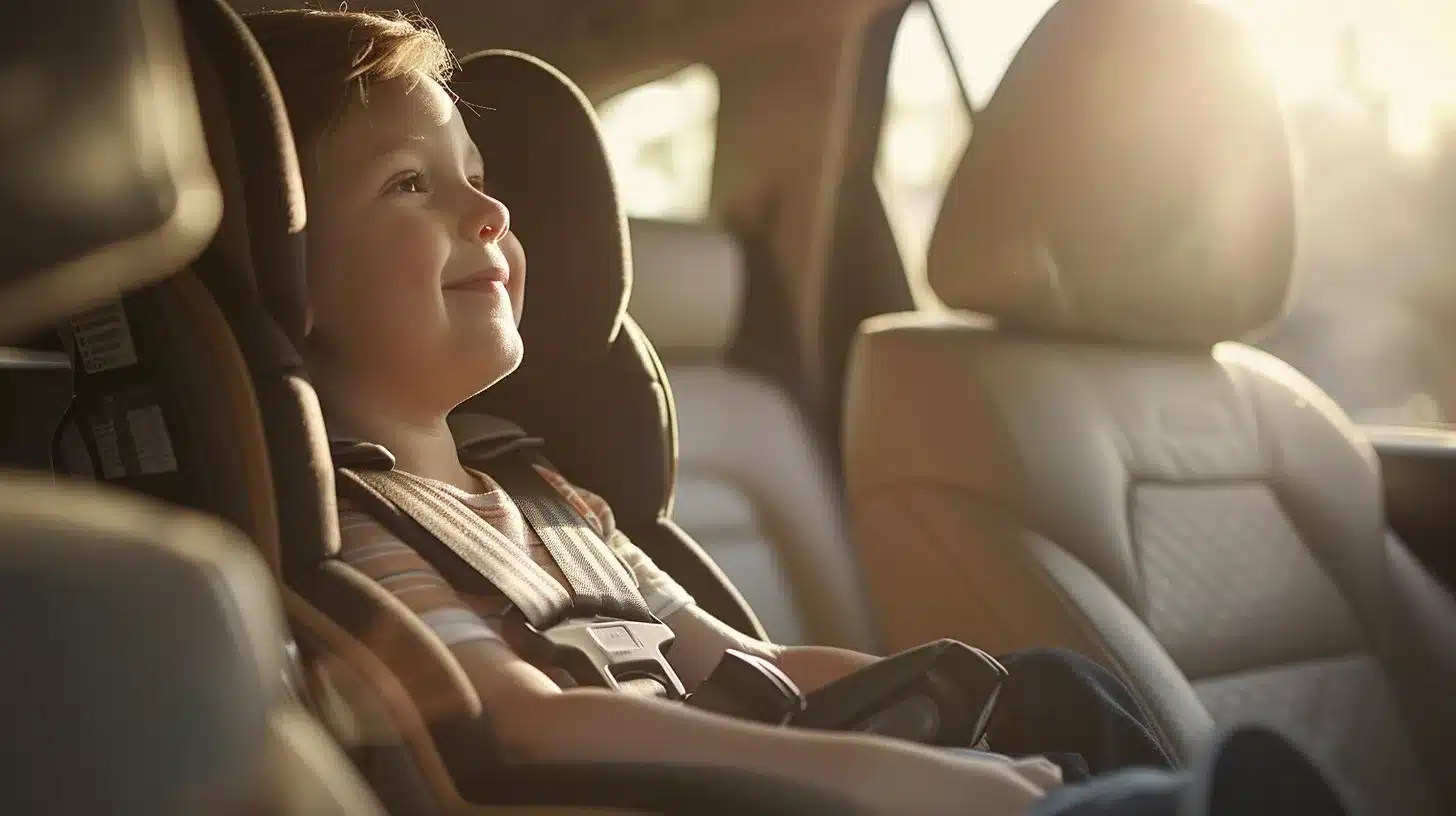
Honda has prioritized child safety in their vehicles with third-row seating.
Recognizing that families often place their youngest members in the rear seats, Honda has implemented several features to ensure their protection.
1. Child Seat Compatibility
Honda has designed their 3rd-row seats with child safety in mind.
The seats are engineered to accommodate various types of child seats, making it easier for parents to secure their children properly.
Key features include:
- Compatibility with rear-facing, forward-facing, and booster seats
- User-friendly installation process with clear markings and easily accessible anchors
- Contoured seats to hold child seats firmly in place, reducing movement during travel
2. LATCH System
The Lower Anchors and Tethers for Children (LATCH) system is a standard feature in Honda’s 3rd-row seats, providing an additional layer of security for child seats.
System components:
- Lower anchors built into the vehicle’s seat structure
- Top tether anchors for additional stability, especially important for forward-facing seats
The LATCH system ensures a secure connection between the vehicle and the child seat, enhancing safety in the event of a collision and reducing the risk of incorrect installation.
Rear Occupant Alert Systems
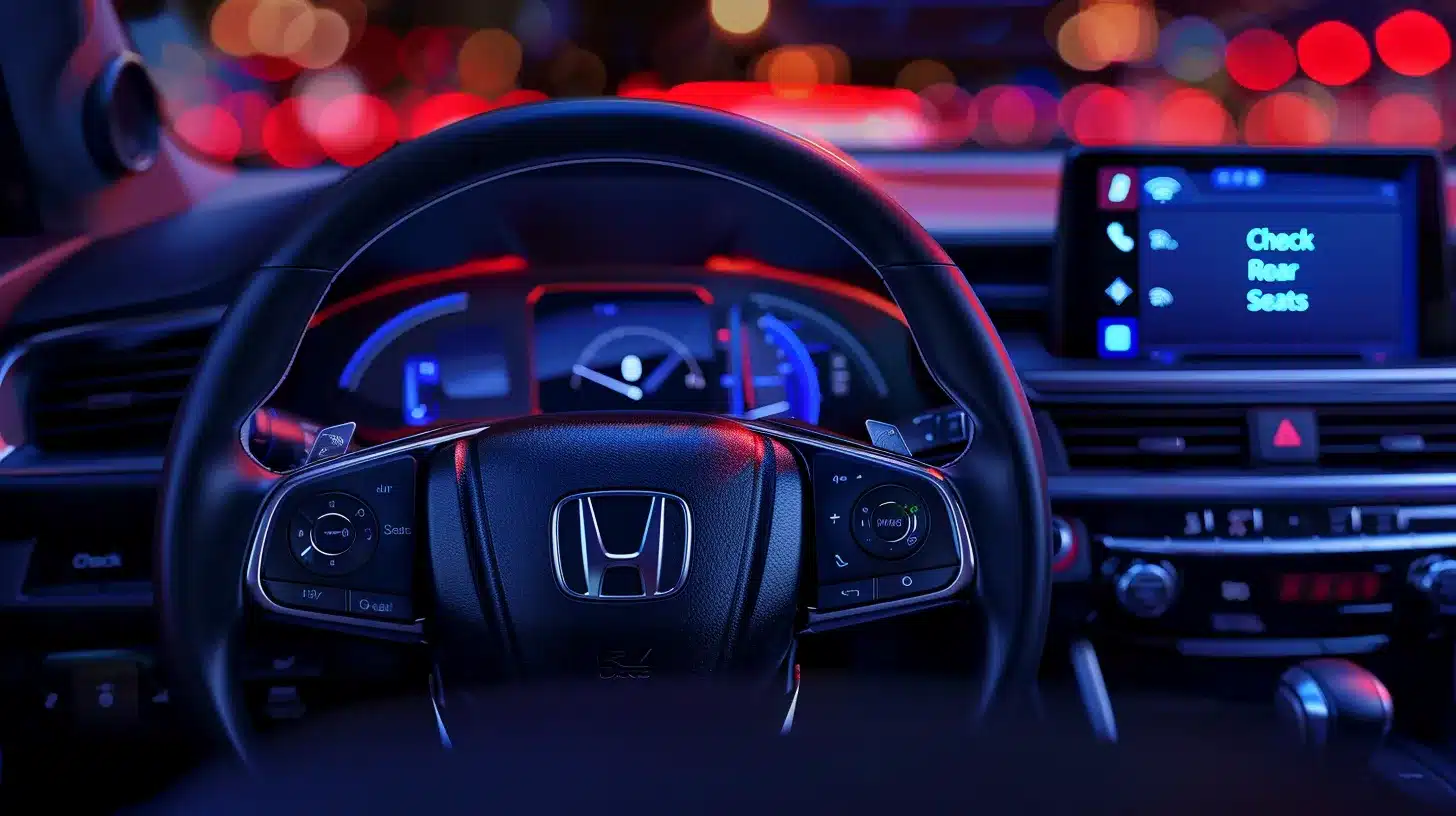
Honda has implemented innovative technologies to enhance the monitoring and safety of 3rd-row passengers, particularly children.
1. CabinWatch and CabinTalk
These features work together to provide drivers with enhanced visibility and communication capabilities for 3rd-row passengers.
CabinWatch:
- Uses a camera to provide a clear view of the 3rd-row seats
- Displays the view on the infotainment screen
- Allows parents to monitor children without turning around, reducing distraction
CabinTalk:
- Enables the driver to communicate directly with rear passengers through the vehicle’s audio system
- Ensures important safety instructions are clearly heard by those in the 3rd row
Safety benefits:
- Reduced driver distraction
- Improved communication with rear passengers
- Enhanced ability to manage children during the drive
2. Rear Seat Reminder
Honda has incorporated a Rear Seat Reminder system to prevent children or pets from unintentionally leaving the vehicle.
How it works:
- Activates when rear doors are opened before a journey
- Provides an audible and visual alert when the engine is turned off
- Prompts the driver to check the 3rd row before exiting the vehicle
Importance:
- It helps prevent tragic accidents related to children left in hot cars
- Increases overall awareness of rear occupants
- Adds an extra layer of safety for families with young children
By implementing these comprehensive safety features for 3rd-row passengers, Honda demonstrates its understanding of the unique challenges faced by families traveling with children.
These thoughtful additions enhance safety and provide peace of mind for parents, who know that their most precious cargo is well-protected throughout every journey.
Final Thoughts
We’ve examined Honda’s third-row safety features closely, from the strong body structure to the helpful CabinWatch system.
But what does this mean for you as a parent and driver? It boils down to confidence on the road.
Honda’s focus on safety isn’t just about meeting standards – it’s about preparing for real-life situations and keeping your family protected.
Whether driving in the city or taking a long trip, Honda’s features work constantly to keep your loved ones safe.
As you consider options for a family vehicle, remember that with Honda, you’re getting more than just a car – you’re gaining a safety ally for your family’s travels.
So, what will you do next? Perhaps you’ll try out a Pilot or take an Odyssey for a drive?
Your journey to family safety begins with Honda – are you prepared to start?

